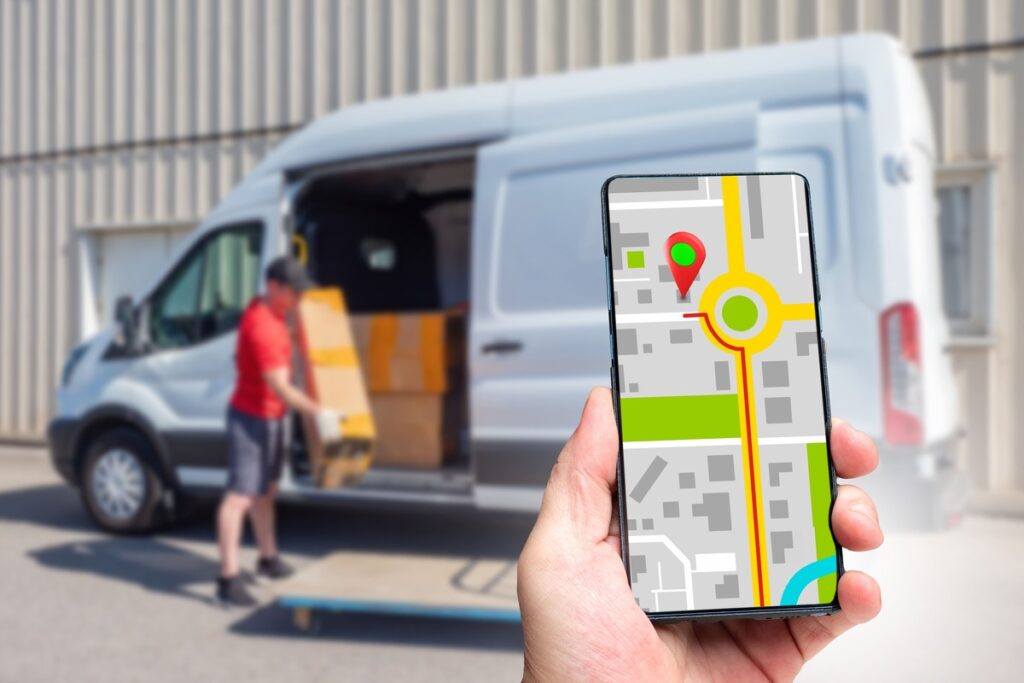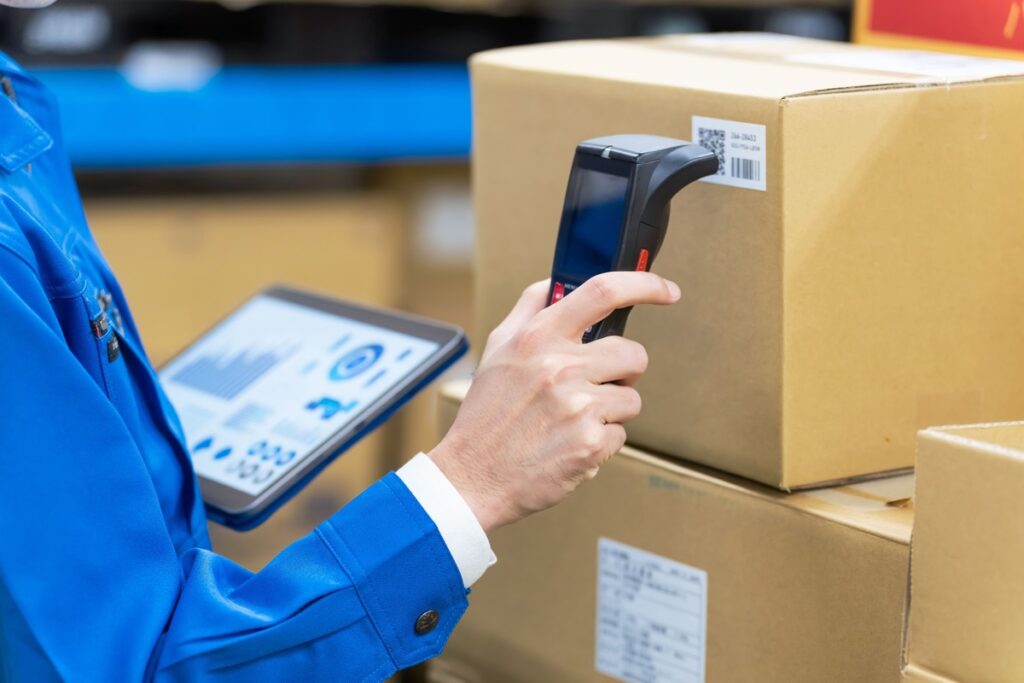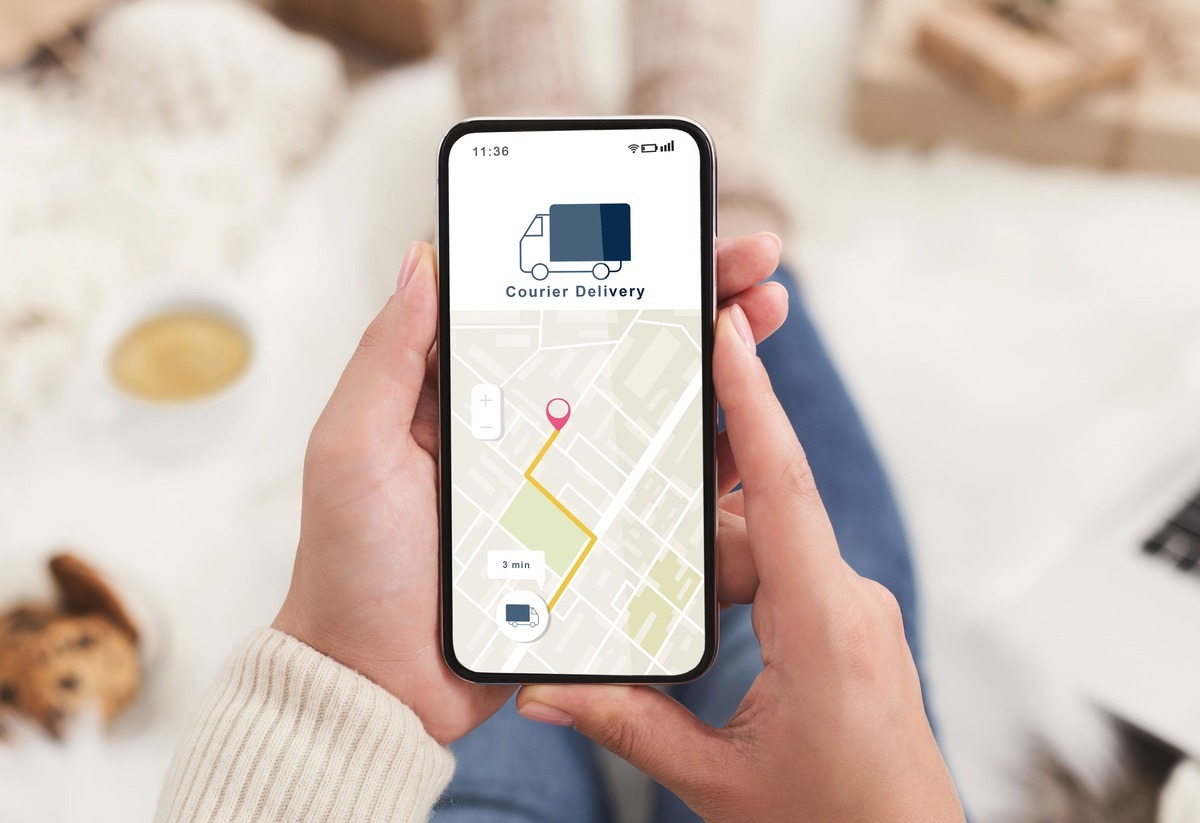Leveraging Professional Courier Tracking for Smarter Logistics and Increased Efficiency
You shipped it. The order was confirmed, the label printed, the van loaded. But now… silence.
Where is it?
Your customer is waiting. The support team is already getting emails. You’re refreshing tracking portals, juggling tabs from multiple couriers, trying to piece together what should be a simple answer: “Where’s the package?”
Sound familiar?
For growing businesses, this isn’t a rare glitch. It’s a daily frustration. Lack of real-time visibility. Fragmented tracking systems. Delays you can’t predict. Complaints you can’t explain. Costs you can’t trace.
And let’s not forget the worst part: the feeling of being blind in your own supply chain.
But what if tracking wasn’t just a tool to find a package…What if it could actually predict delays, optimize costs, and make your entire logistics smarter?
What Professional Courier Tracking Really Means

Courier tracking is no longer about checking an AWB number on a courier’s website. That model is obsolete.
Professional tracking means aggregated, normalized, and actionable data across multiple carriers, integrated directly into your systems. It’s the backbone of predictive logistics and high-performance fulfillment.
Let’s break this down from the top:
Unified Visibility Across Carriers (Macro-Level Control)
Instead of logging into five courier portals and hoping for consistency, professional platforms consolidate all tracking flows into a single interface. Every status, regardless of the courier, follows a standardized logic (e.g. picked up, in transit, failed delivery, returned), allowing for fast filtering, reporting, and response.
This eliminates data silos and enables real-time decisions at scale, especially for businesses working with multi-carrier strategies across regions or countries.
System Integration with OMS, ERP, and WMS
Tracking data isn’t useful if it lives in isolation. A professional solution plugs directly into your Order Management System, ERP, or Warehouse Management System, making tracking part of your operational flow, not an extra task.
This means:
- Your support team sees live status in the customer view.
- Your warehouse knows when to prepare replacements or returns.
- Your finance team can analyze delivery success vs. cost per courier.
Everything is synchronized. No more chasing updates.
Dynamic Event Mapping and Exception Management
The real value lies in how you respond to issues.
Modern courier tracking platforms allow custom business rules:
- Flag a delivery as “at risk” if it’s been at the hub for more than 36 hours.
- Trigger a customer email when a package is delayed.
- Alert your ops team when a specific courier has a surge in failed deliveries.
You’re no longer just tracking, you’re anticipating and acting.
Performance Reporting by Zone, Courier, Product Type
Beyond status updates, the system provides granular insights:
- Which courier fails most often in rural areas?
- What SKUs have higher return rates due to failed first delivery attempts?
- How does delivery performance vary by zip code or warehouse?
These insights power data-driven carrier allocation and smarter last-mile strategies, reducing costs and boosting first-attempt delivery success.
Discover more benefits of an effective order tracking page!
Scalability and Flexibility for Multi-Market Logistics
Professional courier tracking isn’t static. It supports plug-and-play courier additions, automated fallback logic, and localized delivery flows (e.g. lockers, click & collect, weekend delivery).
As your business expands, across categories, campaigns, or countries, the system adapts without slowing you down.
The Real Problems Professional Tracking Solves
Most logistics managers think they have a tracking system, until it fails them. What they really have is carrier monitoring, not performance intelligence. A true professional courier tracking solution addresses six critical pain points that directly impact margins, customer experience, and operational stability.
1. Lack of Real-Time Visibility → Full Operational Transparency
The problem: You ship thousands of parcels but have no unified view of their journey. Tracking links are external, inconsistent, and reactive.
The solution: A centralized tracking platform aggregates real-time status updates for every shipment, across all couriers, in a single dashboard.
No refresh required. No delays. Just live tracking embedded into your systems, support, CRM, or ERP.
Impact:
- Faster customer response times
- Reduced “Where is my order?” tickets
- Earlier escalation of blocked or failed deliveries
2. Manual and Fragmented Processes → End-to-End Automation
The problem: Ops teams are manually checking delivery statuses, switching between portals, updating spreadsheets, and sending status emails.
The solution: A professional tracking layer syncs automatically with couriers via API. Status updates are pushed into your backend. Exception workflows (e.g. delayed parcels, depot loops) trigger automated actions.
Impact:
- 60–80% less manual work for tracking-related tasks
- Streamlined daily operations
- Fewer handovers, fewer errors
3. High and Unexplained Delivery Costs → Cost Attribution and Optimization
The problem: You’re leaking margin, but you don’t know where. Some deliveries cost 3x more than others, but there’s no visibility by zone, courier, or failure rate.
The solution: The system tags every order with performance and cost data—mapped to courier, route, delivery type, and outcome.
Impact:
- Clear ROI per courier
- Automated courier allocation rules based on performance/cost mix
- Waste reduction (e.g. blocking low-performing couriers in rural zones)
4. Returns and failed deliveries → Predictive Analytics
The problem: You don’t know why deliveries fail, or how to prevent them. Packages bounce back from depots, and every failed delivery is a cost sink.
The solution: Professional tracking enables pattern recognition: by zip code, delivery window, recipient behavior, or product category. You gain a predictive layer: identify high-risk orders before they fail.
Impact:
- Lower return and re-delivery rates
- Targeted rules for risky zones (e.g. use SMS + phone confirmation)
- Preemptive action, not just damage control
5. Disconnected Teams → One Source of Truth
The problem: Ops, customer service, and sales all work with partial, conflicting data. Everyone is guessing. Accountability is murky.
The solution: Real-time tracking data is visible across the company, with custom views for each role. Support sees full delivery history. Warehouse gets alerts on failed drop-offs. Management sees courier performance trends.
6. Pressure to Scale Seamlessly → Elastic Logistics Infrastructure
The problem: Every Black Friday or expansion pushes your systems to the limit. Adding new couriers or multiple delivery methods takes weeks.
The solution: Professional courier tracking platforms are designed for agility: add new couriers in hours, not days. Set fallback rules, route by performance, and localize delivery methods.
Impact:
- Fast onboarding of new carriers
- Resilience during peak periods
- Confidence to scale into new regions
Innoship offers real-time tracking aggregation, automated courier allocation based on performance and cost, and advanced analytics for last-mile optimization. What sets it apart is its plug-and-play integration with over 50 couriers, combined with machine learning algorithms that help reduce delivery failures and optimize cost per parcel.
The Tangible Benefits: From Data to Measurable Logistics Gains

Professional courier tracking isn’t just a technological upgrade, it’s a business performance lever. When implemented properly, it generates quantifiable improvements across the full logistics chain: from delivery success rates and customer satisfaction to operational efficiency and cost reduction.
Below is a breakdown of key problems, the tracking-enabled solution, and the measurable outcome typically observed by data-driven logistics teams:
Comparative Impact Table
| Challenge | Tracking-Enabled Solution | Expected Result |
|---|---|---|
| Unclear delivery status | Real-time, unified dashboard across all carriers | ↓ 30% inbound support requests |
| Failed first-attempt deliveries | Predictive alerts + risk mapping by area/time slot | ↓ 20% failed deliveries |
| Manual status monitoring | Automated status sync in ERP/OMS | ↓ 60–80% manual tracking tasks |
| Overuse of expensive carriers | Performance-based courier allocation rules | ↓ 15–25% delivery cost per order |
| Return spikes during peak campaigns | Data-driven fallback rules and zone-specific courier filters | ↓ 20–30% peak-season returns |
| Team misalignment on delivery issues | Shared, real-time access to tracking data across departments | ↑ Faster internal resolution |
| Scalability blocked by courier lock-in | Plug-and-play integration of new couriers, auto-fallback logic | ↑ Multi-market scalability |
How to Implement Professional Courier Tracking
You don’t need to reinvent your logistics to get started with professional tracking. But you do need a clear implementation strategy.
Step 1: Map Your Current Delivery Landscape
- List all the couriers you use (local, regional, international).
- Identify what tracking data you currently collect (and from where).
- Note which systems are involved: OMS, ERP, WMS, CRM, customer portals.
- Highlight current pain points: delays, returns, WISMO volume, blind spots.
Goal: Establish your baseline and uncover operational blind spots.
Step 2: Define Clear KPIs and Success Criteria
- Examples:
- Delivery success rate (%) per courier or zone
- First attempt delivery rate
- Return rate
- Average resolution time for tracking-related support tickets
- Cost per successful delivery
Goal: Know what success looks like before you integrate anything. These are some KPIs for effective carrier management.
Step 3: Choose the Right Tracking Platform
- Evaluate platforms based on:
- Multi-carrier support
- Real-time API integrations
- Customization of alerts/workflows
- Analytics and reporting depth
- Ease of integration with existing systems (plug-ins, API, middleware)
Goal: Select a platform that matches your tech stack and growth model.
Step 4: Connect and Test Integrations
- Start with 1–2 high-volume couriers and a sample of live orders.
- Sync with your OMS and ERP (most platforms provide sandbox/test environments).
- Test for:
- Real-time status updates
- Status translation and normalization
- Workflow trigger accuracy (alerts, exceptions, fallback logic)
Goal: Validate that data flows correctly and triggers work as expected.
Step 5: Train Your Teams by Function
- Support: How to access real-time status, interpret delays, escalate exceptions.
- Warehouse: How to identify failed deliveries, prepare replacements, handle returns.
- Management: How to monitor courier KPIs, costs, and customer experience.
Step 6: Launch in Phases and Monitor Closely
- Roll out tracking in stages (e.g. one region, one courier, one brand).
- Review performance weekly for:
- Tracking delays
- Status gaps
- Unexpected delivery exceptions
- Refine your fallback rules and courier allocation based on initial results.
Step 7: Iterate and Expand
- Gradually integrate:
- All couriers
- Additional brands/business units
- New delivery options (lockers, same-day, international)
- Use platform analytics to:
- Reallocate volumes to best-performing couriers
- Predict peak-period failures
- Refine customer communication timing
What’s Next: The Future of Courier Tracking and Last-Mile Intelligence

Courier tracking is evolving fast, driven by AI, predictive analytics, and new delivery infrastructures. The goal? Zero guesswork and maximum control, from the moment an order leaves your warehouse to the second it lands in your customer’s hands.
Here’s where the most advanced players are heading:
AI-Powered Predictive Logistics
Platforms are beginning to forecast delivery success/failure based on historical data, weather, geo patterns, and buyer behavior. ETA is no longer static—it’s dynamically updated based on real-world factors: courier route delays, traffic, depot congestion.
Impact: Couriers are automatically re-prioritized based on real-time risk scoring, not static SLAs.
Drone-Enabled Last-Mile Delivery (and Tracking Implications)
In rural and hard-to-reach areas, drone delivery pilots are already proving faster fulfillment with lower carbon footprint. However, drone logistics introduce new tracking challenges:
- Altitude, flight path, and weather data must be integrated into the tracking logic.
- ETAs are affected by airspace permissions and environmental variables, not traffic.
- Delivery confirmation relies on aerial proof of delivery (video/photo timestamped), not signatures.
Hyper-Personalized Delivery Communication
Based on buyer behavior and past interactions, customers will:
- Choose preferred carriers dynamically
- Receive contextual alerts based on likelihood of delay
- Be offered real-time rerouting options (e.g. change drop-off point mid-delivery)
Sustainability-Driven Routing and Smart Emissions Tracking
Companies are under pressure to track not just deliveries, but also their carbon footprint. Tracking systems will soon offer:
- CO₂ per delivery report per courier
- Emissions-based courier selection
- Smart grouping of shipments for greener routing
FAQ
1. What is professional courier tracking?
Professional courier tracking aggregates real-time data from multiple carriers into one interface, offering a unified, standardized view of every shipment.
2. Why is multi-carrier visibility important?
It eliminates data silos, lets teams act on live updates, and ensures consistent reporting regardless of courier or region.
3. How does it reduce delivery failures and costs?
By using predictive analytics and performance-based courier allocation, businesses prevent failed deliveries and cut unnecessary expenses.
4. Can it integrate with existing systems like OMS or ERP?
Yes — professional platforms connect directly with OMS, ERP, and WMS, syncing tracking data with operations and support workflows.
5. How does it help teams work better together?
It provides one source of truth across departments, improving collaboration, accountability, and faster resolution of delivery issues.
Professional courier tracking it’s a competitive advantage. It gives your teams real-time control, transforms raw data into actionable insights, and turns logistics into a strategic growth engine.
And the good news? You don’t need to build this from scratch.







